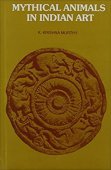Joining: 1 definition
Introduction:
Joining means something in Hinduism, Sanskrit. If you want to know the exact meaning, history, etymology or English translation of this term then check out the descriptions on this page. Add your comment or reference to a book if you want to contribute to this summary article.
In Hinduism
Vastushastra (architecture)
Source: Shodhganga: Elements of Art and Architecture in the Trtiyakhanda of the Visnudharmottarapurana (vastu)Joining of the bricks (in construction) was traditionally accomplished using Hard Cement, which was used as a Material for the Construction of Temples and other buildings, according to the Viṣṇudharmottarapurāṇa, an ancient Sanskrit text which (being encyclopedic in nature) deals with a variety of cultural topics such as arts, architecture, music, grammar and astronomy.—In ancient time there was a special kind of hard cement, which was known as vajralepa and this was used in construction as well as for joining the bricks. It is nothing but a binding agent. In the Viṣṇudharmottarapurāṇa, five procedures of preparing the vajralepa are suggested.

Vastushastra (वास्तुशास्त्र, vāstuśāstra) refers to the ancient Indian science (shastra) of architecture (vastu), dealing with topics such architecture, sculpture, town-building, fort building and various other constructions. Vastu also deals with the philosophy of the architectural relation with the cosmic universe.
See also (Relevant definitions)
Full-text (+533): Samyojana, Brahmanjali, Yojana, Udyava, Yojayitri, Parvapurnata, Jadani, Jodani, Jadakama, Yuti, Yunjana, Sandhapa, Padayojana, Samdhana, Samasanjana, Anjaliputa, Milat, Anjali, Sambhuya, Ghatana.
Relevant text
Search found 173 books and stories containing Joining; (plurals include: Joinings). You can also click to the full overview containing English textual excerpts. Below are direct links for the most relevant articles:
Sushruta Samhita, Volume 6: Uttara-tantra (by Kaviraj Kunja Lal Bhishagratna)
Chapter II - Pathology of the diseases of the eye-joints < [Canto I - Shalakya-tantra (ears, eyes, nose, mouth and throat)]
Chapter LXV - The Technical terms used in the treatise < [Canto V - Tantra-bhusana-adhyaya (embellishing chapters)]
Trishashti Shalaka Purusha Caritra (by Helen M. Johnson)
Part 2: Incarnation as Ananta (introduction) < [Chapter IV - Anantanāthacaritra]
Part 14: Bharata’s march through Khaṇḍapapātā < [Chapter IV]
Part 11: Sermon by Pārśva < [Chapter III - Birth, youth, initiation, and omniscience of Śrī Pārśva]
Chandogya Upanishad (english Translation) (by Swami Lokeswarananda)
Garga Samhita (English) (by Danavir Goswami)
Verse 2.24.2 < [Chapter 24 - The Story of Asuri Muni in the Rāsa-dance Pastime]
Yoga Vasistha [English], Volume 1-4 (by Vihari-Lala Mitra)
Chapter V - Various significations of yoga < [The yoga philosophy]
Chapter III - The yoga of english writers < [The yoga philosophy]
Chapter VI - Elysium of bhargava < [Book IV - Sthiti prakarana (sthiti prakarana)]
Expiatory Rites in Keralite Tantra (by T. S. Syamkumar)
1. Concept of Expiation and the Term Prāyaścitta < [Chapter 1 - Expiatory Rites: Concept and Evolution]
1. Expiatory Rites in Śaiva Texts (Introduction) < [Chapter 2 - Expiatory Rites in Āgamic Literature]
Related products
